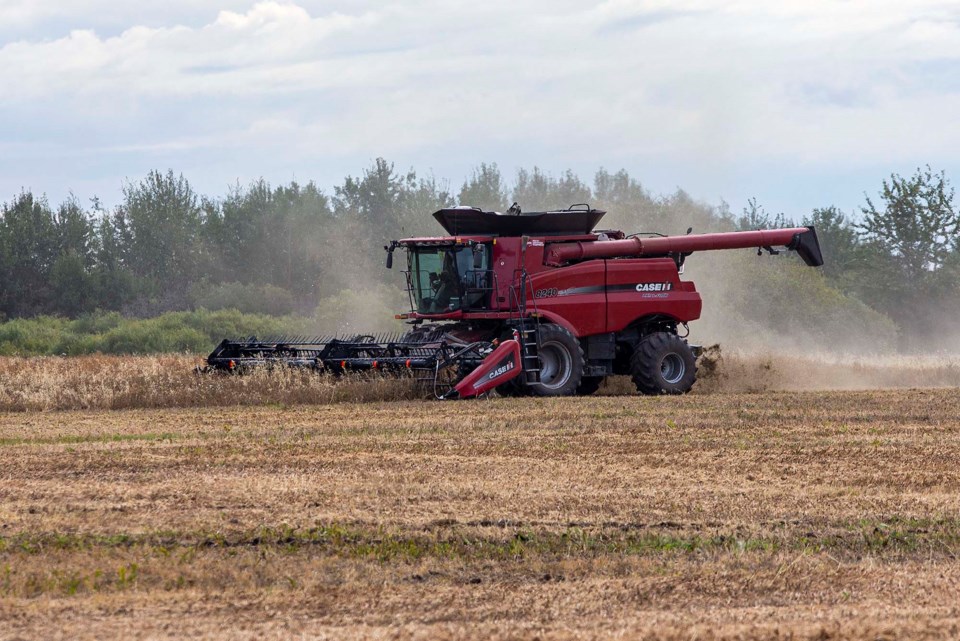Sturgeon County farmers are set to start rolling combines this week on a disappointing, overcooked harvest.
County farmers started the 2021 fall harvest about a month early after a wicked-hot, desert-dry June and July took a blowtorch to their fields.
Sturgeon Valley Fertilizer agronomist Kent Lamoureux said farmers around Manawan Lake were collecting peas as of the week of Aug. 4, with pea and barley collection expected to start county-wide by Aug. 11 — about two weeks to a month ahead of schedule, depending on where you are in the county.
Bon Accord-area farmer Murray Mulligan said this year was a tie for the earliest harvest he’d done in his 40-year career.
“It’s better than harvesting in the snow!” he quipped.
Hairdryer harvest
This year’s harvest is all about heat, Lamoureux explained. While an unusually warm spring gave farmers a two-week head-start on seeding, it was the record-breaking heat waves of June and July that pushed plant development about four weeks ahead of schedule. High winds and no rain also sapped soil moisture reserves.
“It was like living inside a hairdryer,” Lamoureux said, and it caused plants to give up on growing early.
Lamoureux said the June heat arrived just as canola plants were starting to bloom, roasting their flowers and keeping them from developing seeds. Water-loving fava beans also suffered mightily.
Weeks of hot, dry conditions ravaged crops throughout Alberta, the July 27 Alberta Crop Report found. Just under 20 per cent of crops in the Edmonton region were in good to excellent condition — far below the 10-year average of 65 per cent.
Terry Anderson, who farms 3,500 acres near Bon Accord, said he had lost about half his peas and canola and some 60 per cent of his fava beans to the summer heat. He expected to fall back on crop insurance to cover his losses.
“This is the second-worst (drought) stress that we’ve ever had,” he said, second only to the drought of 2002.
Just 15 per cent of pastures around Edmonton were in good condition, the Alberta Crop Report found.
Hay crops had come in at about 30 to 40 per cent of their average yield as a result, said Colin Campbell of Cajun Angus near Bon Accord. High feed prices, plus Americans buying up scarce supplies, mean many ranchers won’t be able to afford to feed their herds this winter.
“The cow herd is going to be reduced significantly,” Campbell said — by about 30 per cent in his case, with some Manitoba farmers looking at cuts of up to 40 per cent.
Bright side?
Lamoureux said farmers will see a more relaxed, choppier harvest season as they wait for different crops to become ready for collection. Most will collect half a crop, “and that’s being optimistic,” while some will write off their crops or sell it as animal feed, the latter of which could help ranchers.
On the plus side, Anderson said the harvest shouldn’t take too long, as there isn’t much to collect. High crop prices could also offset some losses. Lamoureux said an early finish will also give farmers more time to do their fall field prep-work.
While it might have helped save some crops a few weeks ago, Mulligan said rain at this point would just degrade the quality of the harvest. He hopes for a dry August and September for the harvest, followed by a soaking wet October to replenish moisture reserves for next spring.
Lamoureux asked drivers to have patience around farmers moving heavy equipment between fields in the weeks ahead.
“These guys have a lot of stress on their shoulders,” he said, so drive with care and consideration around them.




